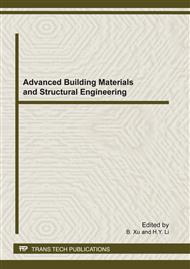p.265
p.272
p.277
p.281
p.289
p.293
p.299
p.302
p.306
Combining Item Rating Similarity and Item Classification Similarity for Better Recommendation Quality
Abstract:
Recommender systems are becoming increasingly popular, and collaborative filtering method is one of the most important technologies in recommender systems. The ability of recommender systems to make correct predictions is fundamentally determined by the quality and fittingness of the collaborative filtering that implements them. It is currently mainly used for business purposes such as product recommendation. Collaborative filtering has two types. One is user based collaborative filtering using the similarity between users to predict and the other is item based collaborative filtering using the similarity between items. Although both of them are successfully applied in wide regions, they suffer from a fundamental problem of data sparsity. This paper gives a personalized collaborative filtering recommendation algorithm combining the item rating similarity and the item classification similarity. This method can alleviate the data sparsity problem in the recommender systems
Info:
Periodical:
Pages:
289-292
Citation:
Online since:
February 2012
Authors:
Price:
Сopyright:
© 2012 Trans Tech Publications Ltd. All Rights Reserved
Share:
Citation:


